Water Symposium Rocks Parksville
“Parksville 2019 demonstrated that a group of 200 biologists, engineers, planners, streamkeepers, politicians, administrators, and others, all with different backgrounds and responsibilities, can share a common learning experience and agree on strategies for water stewardship and stream restoration.” These were the words of John Finnie, the Regional District of Nanaimo (RDN) former General Manager for Regional and Community Utilities, at the second annual Vancouver Island Water Stewardship Symposium held in Parksville, April 2, 3 and 4.
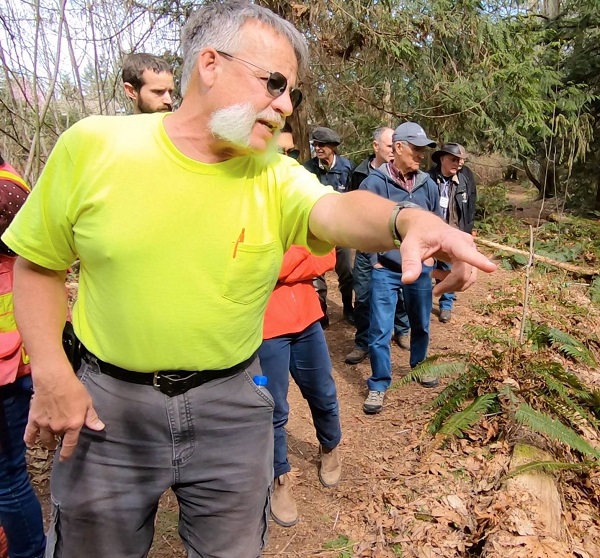
Delegates came from far and wide – from Sooke north to Port McNeill; from Metro Vancouver east to Alberta; and from south of the border (Washington State, Virginia and Mississippi). Parksville Mayor Ed Mayne opened the Symposium with a welcome to delegates to the three-day event, co-hosted by the Partnership for Water Sustainability, Nanaimo & Area Land Trust and the Mid Vancouver Island Habitat Enhancement Society (MVIHES).
Dave Derrick - photo by David Mackenzie
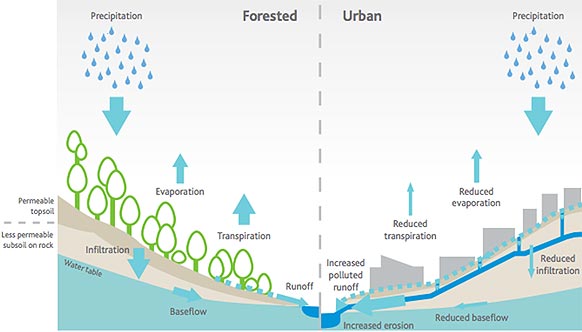
Last year’s symposium, held in Nanaimo, explained how land development using drainage systems that send rainfall straight off the land into creeks and rivers disrupts the natural flow and infiltration patterns of water on our landscape. The consequences of this disruption are more erosion and flooding, very low water levels in summer, and loss of aquatic habitat. The problem will worsen with climate change.
At this year’s symposium, delegates learned how communities can apply science-based understanding to restore the natural water balance, and about local government initiatives that are ‘getting it right’ and moving along pathways that lead to restorative land development. The restoration stories of Bowker Creek in the urban heart of the Capital Region and Brooklyn Creek in the suburban Comox Valley demonstrate how partnerships between local governments and community stewards result in success on the ground where it matters.
Dave Derrick of Mississippi (above photo), a stream restoration innovator and formerly with the US Army Corps of Engineers, conducted a workshop built around a field lecture in Shelly Creek Park. He stated, “The stability of the Shelly watercourse has been compromised by land use activities in the surrounding creekshed… why would you further damage the creek to get access [for restoration in hard to reach sections] when the real solution lies in fixing the surrounding landscape where the problems are actually created?” His distinct southern accent added intrigue to his words - oo la la!
“The Symposium has provided a huge boost to MVIHES, in our efforts to draw attention to our ‘watershed health depends on you’ program, whether it is Shelly Creek water balance restoration or future monitoring of Englishman River watershed health,” added Peter Law, MVIHES President.
Julie Pisani, Coordinator of the RDN’s Drinking Water and Watershed Protection program (DWWP), led a community engagement session for input towards an actionable vision for achieving water sustainability in the second decade of the DWWP program, with its Action Plan being updated this year.
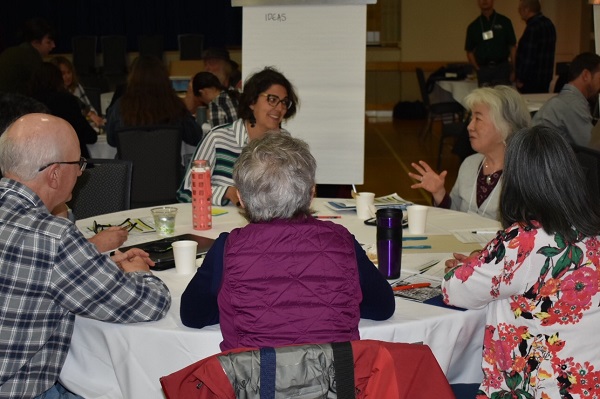
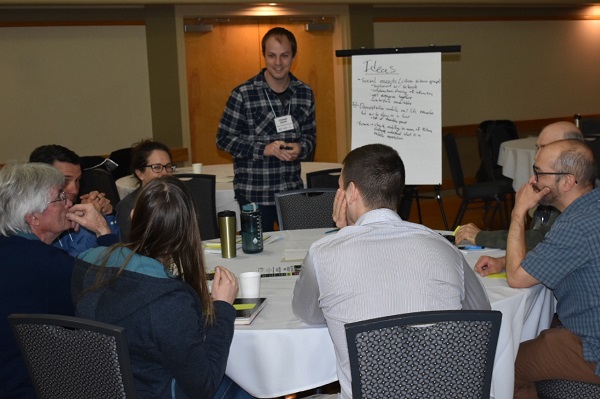
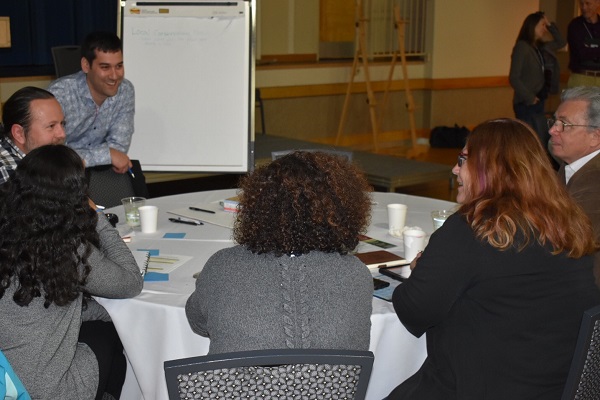
Twenty students with the Master of Community Planning Program at Vancouver Island University (VIU) served as table facilitators for the engagement session. “The involvement of the students extended the collaboration across the generations, providing an opportunity for future leaders and planners to be involved in the discussions.”
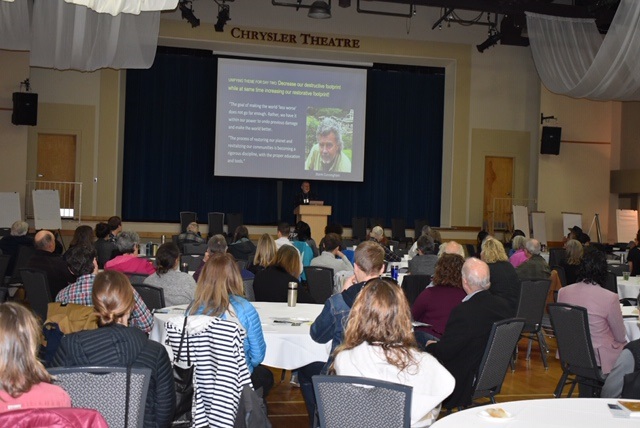 On the evening of April 3, Storm Cunningham gave an inspiring and informative talk on the strategies used by communities who have revitalized their neighbourhoods and economies by restoring abandoned and deteriorating infrastruture (such as railway bridges and buildings) and remorphed them into facitilies needed for communties to thrive. Storm is from Washington D.C. and the author of "The Restoration Economy", "reWealth", and the soon to be released "RECONOMICS: The Path to Resilient Prosperity". On the last day of the symposium he gave a presentation on how applying the same strategies to land development can lead to restoration of the natural hydrology of creeks and aquifers: by decreasing our destructive footprint while increasing our restorative footprint. “The goal of making the world ‘less worse’ does not go far enough. Rather, we have it within our power to undo previous damage and make the world better."
On the evening of April 3, Storm Cunningham gave an inspiring and informative talk on the strategies used by communities who have revitalized their neighbourhoods and economies by restoring abandoned and deteriorating infrastruture (such as railway bridges and buildings) and remorphed them into facitilies needed for communties to thrive. Storm is from Washington D.C. and the author of "The Restoration Economy", "reWealth", and the soon to be released "RECONOMICS: The Path to Resilient Prosperity". On the last day of the symposium he gave a presentation on how applying the same strategies to land development can lead to restoration of the natural hydrology of creeks and aquifers: by decreasing our destructive footprint while increasing our restorative footprint. “The goal of making the world ‘less worse’ does not go far enough. Rather, we have it within our power to undo previous damage and make the world better."
Sponsors of the Second Annual Vancouver Island Water Stewardship Symposium
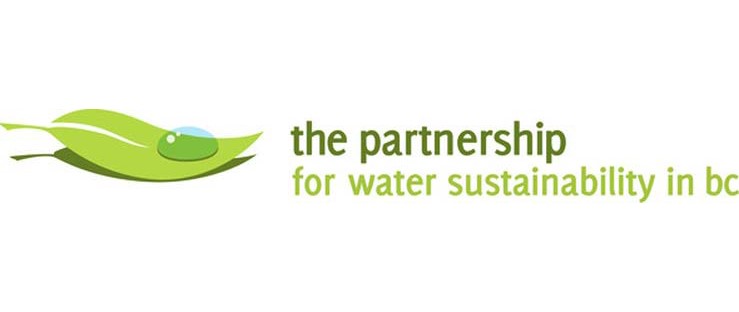
![]()

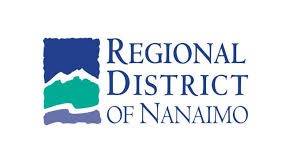
![]()


![]()